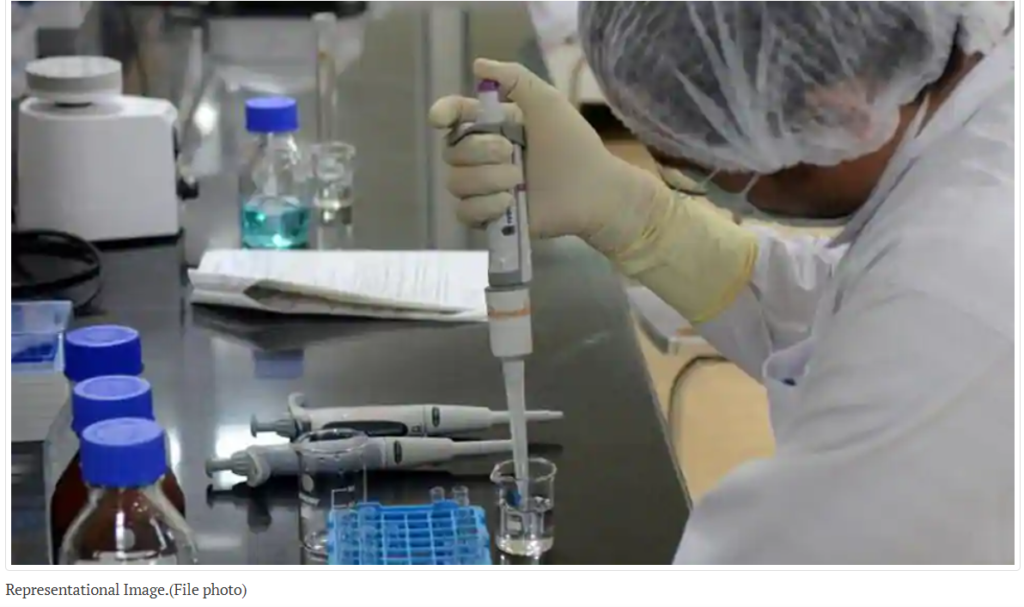If affirmed through further studies, these findings could be transformative for the care of age-related vision diseases like glaucoma and to the fields of biology and medical therapeutics for disease at large
Representational Image.(File photo)
A team of scientists at Harvard Medical School have turned back the clock on aged eye cells in the retina to reverse vision loss in elderly mice with a condition mimicking human glaucoma, according to a study published in Nature on December 2.
This proof-of-concept study demonstrates the epigenetic reprogramming of complex tissues, such as the nerve cells of the eye, to a younger age when they can repair and replace tissue damaged from age-related conditions and diseases. The approach paves the way for therapies to promote tissue repair of various organs to reverse aging and age-related diseases in humans.
“That ageing (the loss of cellular functions over time) can (at least in a mouse) be safely reversed in a complex tissue such as the eye to restore its youthful functions. It implies that, in mammals, there is a reset switch that can erase many of the problems that accumulate with ageing. It implicates the epigenome (gene regulation), specifically epigenetic noise that accumulates over time, as a central cause of ageing,” said senior author Dr David Sinclair, professor of genetics in the Blavatnik Institute and co-director of the Paul F. Glenn Center for Biology of Aging Research at Harvard Medical School, in an email.
“If affirmed through further studies, these findings could be transformative for the care of age-related vision diseases like glaucoma and to the fields of biology and medical therapeutics for disease at large,” Dr Sinclair said.
Glaucoma is an optic neuropathy marked by progressive degeneration of the optic nerve and is the second leading cause of irreversible blindness, after cataract. The study is the first to demonstrate that it is possible to reverse vision loss, rather than stop its progress, in animals with a condition mimicking human glaucoma.
Dr Sinclair and his team used an adeno-associated virus (AAV) as a vehicle to deliver into the retinas of mice three youth-restoring genes—Oct4, Sox2 and Klf4—that are normally switched on during embryonic development. The three genes, together with a fourth one, which was not used in this work, are collectively known as Yamanaka factors. This promoted nerve regeneration following optic-nerve injury in mice with damaged optic nerves, reversed vision loss in animals with a condition mimicking human glaucoma, and reversed vision loss in aging animals without glaucoma.
“The (Yamanaka) factors have been used to make pluripotent stem cells in the dish and used to make cells that are returned to the body. They cause cancer or kill animals when turned on. We show it is possible to use a subset of them to reverse aging, and in existing cells within the body,” said Dr Sinclair. The treatment resulted in a two-fold increase in the number of surviving retinal ganglion cells after the injury and a five-fold increase in nerve regrowth.
“Previous studies identified factors that can promote retinal ganglion cells survival and regeneration, but none showed restoration of vision. Sinclair’s group very cleverly used only three (Oct4, Sox2, Klf4) of the four ‘Yamanaka factors’ and restored eyesight after damage to the optic nerve. Thus, avoiding unwanted tumors growth or cell death by not using the c-Myc. Although this study provides proof of principle in mice, it is a huge step forward for the field of regenerative medicine,” said Prof Keshav K Singh, professor of Genetics, pathology and environmental health at the University of Alabama at Birmingham, who has done extensive work in mitochondrial genetics, including reversing skin aging in mice.
Lead author Yuancheng Lu, research fellow in genetics at Harvard Medical Lab and a former doctoral student in Sinclair’s lab, builds on the Nobel-winning discovery of Shinya Yamanaka, who identified the four transcription factors, Oct4, Sox2, Klf4, c-Myc, that could erase epigenetics markers on cells and return these cells to their primitive embryonic state from which they can develop into any other type of cell. Subsequent studies identified two major setbacks — the four Yamanaka factors could induce tumour growth when used in adult mice, which made them unsafe, and could also erase the cell’s identity by resetting the cellular state to its most primitive.
Lu and colleagues circumvented these hurdles by dropping the gene c-Myc to deliver the remaining three Yamanaka genes, Oct4, Sox2 and Klf4. The modified approach successfully reversed cellular aging without fuelling tumour growth or losing their identity.
The findings set the stage for treatment of various age-related diseases in humans. “The study has significance for regenerative medicine towards slowing down or reversing aging related decline in organ function. Yes, gene therapy holds promise to promote tissue repair and reverse age-related diseases in due course, after relevant safety and efficacy studies,” said Dr Anurag Agrawal, director, Council of Scientific and Industrial Research-Institute of Genomics and Integrative Biology, New Delhi.
“The Yamanaka factors can be potentially used to treat neurodegeneration, arthritis, organ deterioration, and other age-related conditions,” said Dr Sinclair.
Article Credit: hindustantimes
